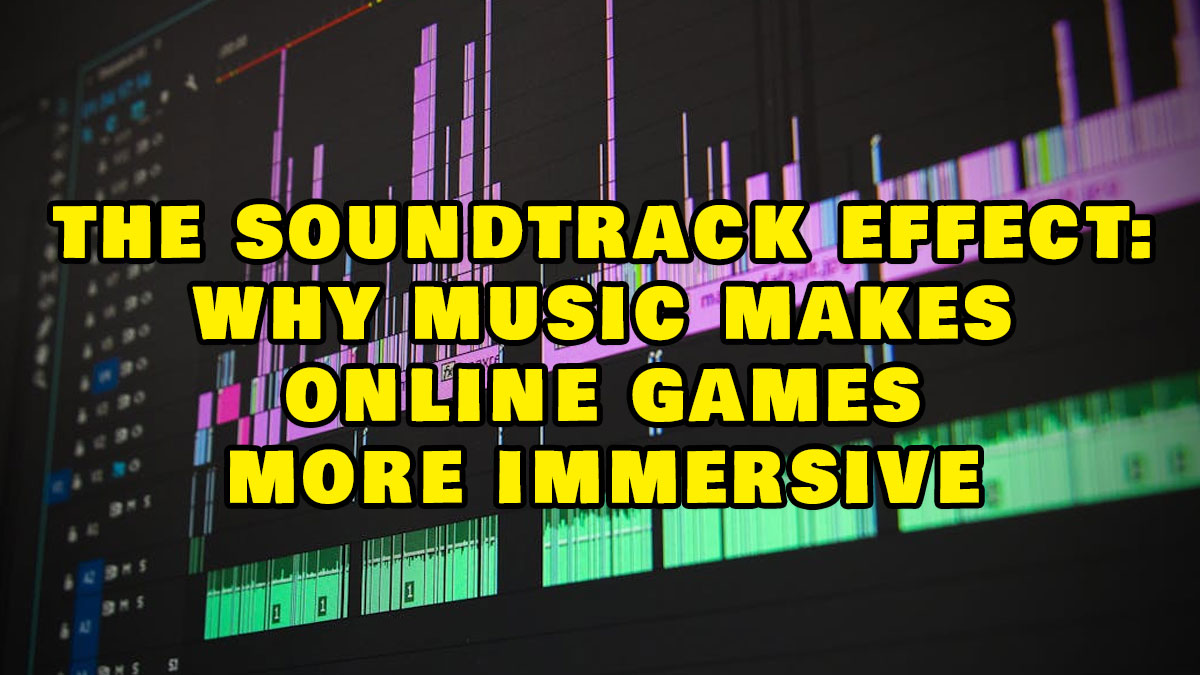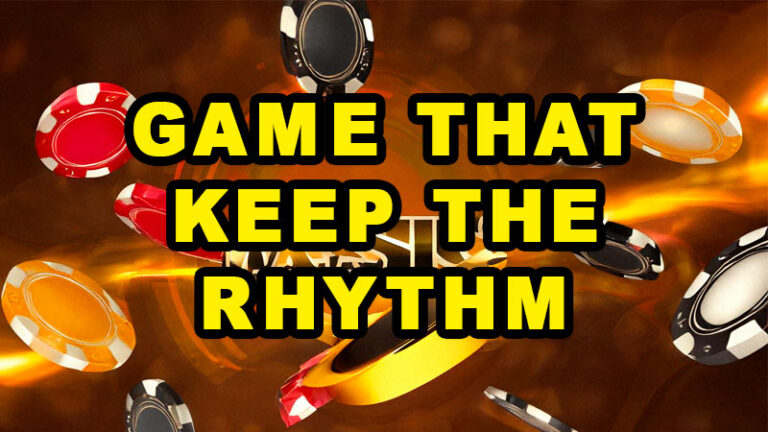Music in online games is never just decoration. It ties together what players see, feel, and remember, giving shape to pacing and emotion while guiding attention. Developers know that a good soundtrack can transform a simple sequence into something unforgettable. Every composition serves a purpose, whether it is tightening suspense before a fight, rewarding progress with bright tones, or reinforcing a dramatic storyline. From the playful chiptunes of early consoles to the sweeping orchestral scores of modern blockbusters, music continues to define how players connect with digital worlds.
Rhythms of Play in Game Design
The role of rhythm in games often feels invisible, but it is one of the most carefully designed elements. In fast-paced action titles, sharp percussion and quick tempos mirror the urgency of reflexive gameplay. Players instinctively fall into step with the beat, and their movements feel synchronized with the soundtrack. Puzzle games, on the other hand, slow things down. They lean on calm, repetitive motifs that give the mind enough space to solve problems without distraction.
Strategy titles usually settle somewhere in the middle. Composers use ambient textures or subdued melodies that stretch comfortably across long sessions, helping players stay engaged but not overwhelmed. Horror games take a very different path, exploiting silence as much as sound. Long quiet stretches create nervous anticipation, and then sudden bursts of noise trigger instinctive reactions. Sports simulations, meanwhile, recreate the pulse of real arenas with layered percussion, chants, and crowd samples.
Through these deliberate choices, developers use rhythm as a tool to align behavior with genre. By adjusting tempo and intensity, they influence energy levels, concentration, and even reaction times. In effect, the soundtrack becomes an invisible metronome that keeps the entire experience in sync.
Soundtracks and Symbolic Cues in Casino-Themed Games
Casino-style games offer some of the clearest examples of music shaping experience. Slot games, in particular, weave short jingles, escalating loops, and celebratory bursts directly into gameplay. As reels spin, the soundtrack often builds in pitch or intensity, matching the suspense of waiting for the result. A small win might trigger a cheerful flourish lasting only a second, while a major bonus often shifts the entire soundscape into a new composition that dominates the session.
Older fruit machines stuck to simple sound bites after each spin, but modern designs draw from electronic, pop, or orchestral traditions, creating layered audio experiences that evolve as players progress. Gamesville maintains a list of demo slots that showcase this practice clearly. Developers often use rising scales to heighten tension and fanfares to celebrate victories. Over time, these audio choices become a kind of branding. Players may forget what the reels looked like, but they can still recall the melody of a memorable slot.
Adaptive Music and Dynamic Transitions
Fixed looping tracks can feel stale, which is why adaptive music has become so influential. Adaptive systems let soundtracks respond directly to player behavior. Step into combat, and the score adds layers of rhythm and urgency. Exit the fight, and calmer melodies return. Exploration often brings neutral ambient textures, while discoveries are underscored with bright resolutions that signal achievement.
Creating these seamless transitions is a challenge. Composers prepare multiple musical branches that can blend smoothly without jarring breaks. Middleware such as FMOD and Wwise handles the technical side, stitching transitions together in real time. The result is a living soundtrack that adjusts constantly, keeping play fresh across hours of gaming. More importantly, adaptive music prevents auditory fatigue. By offering variety, it avoids the monotony of repetition and makes the soundtrack feel like an active partner in gameplay rather than static background decoration.
Cultural and Stylistic Adaptations
Music also carries cultural meaning, and developers know that authenticity matters. Games designed for East Asian audiences often feature pentatonic scales, bamboo flutes, and regional percussion, all of which feel familiar and trustworthy to local players. Western fantasy titles borrow from cinematic traditions, using strings and brass to evoke grandeur. Science fiction soundtracks lean on synthesizers, processed vocals, and pulsing electronics that signal futurism.
Even within shared genres, regional differences shape style. A martial arts game from China might highlight instruments like the guzheng or erhu, while a Korean equivalent uses gayageum and janggu. Both approaches create instant recognition for their respective audiences. International studios, aware of these nuances, increasingly hire composers who can bridge traditions and blend cultural elements without losing coherence. In this way, music acts as both a creative anchor and a cultural passport, grounding digital settings in recognizable sound worlds while opening them to global audiences.
Leitmotifs and Character Identity
Recurring musical themes, known as leitmotifs, give characters and stories sonic identities. A brave hero may always be accompanied by brass-driven melodies, while a villain might carry eerie, dissonant strings. Every reappearance of these themes reinforces memory, linking sound to narrative moments.
This technique draws heavily from opera and film scoring, where audiences learn to recognize characters through recurring music. In sprawling role-playing titles, leitmotifs help players track large casts and storylines by attaching melodies to personalities or locations. When a familiar theme returns during a climactic moment, it carries emotional weight built up over earlier encounters. Developers see leitmotifs not as embellishments but as narrative devices equal to dialogue and cutscenes. By connecting music directly to identity, they ensure stories linger in memory long after gameplay ends.
Technical Constraints and Solutions
Behind every polished soundtrack lies a maze of technical problem-solving. High-quality audio files take up space, so engineers must compress them without losing clarity. Latency presents another challenge, since even small delays between player action and musical response can break immersion. Middleware systems help synchronize timing, while careful planning ensures cues trigger at exactly the right moment.
Mixing is just as demanding. Music must share space with dialogue, environmental effects, and interface sounds. Engineers use equalization to carve out frequency ranges so that each element remains distinct. They also test across many devices, from high-end headphones to ordinary laptop speakers, because audio behaves differently depending on the setup. The goal is always balance. If music overwhelms effects, playability suffers. If it hides too far in the background, immersion weakens. Only through repeated refinement does the soundtrack find its place as a seamless companion rather than an intrusive force.
Observations from Popular Genres
Different genres highlight different strengths of music. Rhythm-based titles place the soundtrack directly at the center, turning it into the mechanic itself. A famous example is Guitar Hero’s collaboration with Metallica, where “Soundform Metallica” pushed players to mirror riffs and beats with precise timing. The game turned the band’s music into an interactive performance, blurring the line between listening and playing.
Shooters take another route, layering intensity dynamically. Firefights unleash aggressive rhythms, while exploration phases lean toward quieter tones that allow tactical focus. Popular franchises like Call of Duty rely on this ebb and flow to sustain excitement without exhausting players. Role-playing games, meanwhile, lean on orchestration and leitmotifs to connect vast regions and characters, weaving sonic continuity across long campaigns.
Horror thrives on silence punctuated by sudden dissonance, while sports titles simulate arenas through chants, drums, and ambient crowd noise. Across genres, the principle holds: music directs interpretation, transforming mechanics into emotionally charged experiences.
The Role of Silence as a Musical Device
Silence may seem like the absence of music, but in game design, it is a powerful tool. In horror, silence heightens suspense, sharpening the impact of sudden sound. Players become hyperaware of footsteps, creaks, or distant noises, which feel amplified against the quiet. Low drones often hum beneath these silences, adding tension that works subconsciously.
Strategy games benefit from silence too, since long sessions can become overwhelming with constant sound. Developers often insert extended quiet passages or faint ambient layers to give the mind space to concentrate. In action games, silence can signal resolution. When the soundtrack cuts immediately after a battle, the quiet itself communicates safety more strongly than dialogue. In every case, silence is treated as equal in value to melody or rhythm, proving that the absence of sound can be just as expressive as its presence.
Multiplayer Environments and Audio Balance
Multiplayer games add another layer of complexity. Music must coexist with voice chat, so developers build systems that lower soundtrack volume when players speak, then restore it afterward. These shifts must feel natural, maintaining immersion without distracting jumps in volume.
Competitive games place even stricter demands on sound. Players rely on subtle audio cues that can decide the outcome of a match. To ensure fairness, music is often softened or dynamically reduced during critical moments. Case studies from popular shooters confirm this balance: intense orchestration swells during firefights but drops instantly when precision listening becomes vital.
Cooperative formats approach the problem differently, favoring ambient backdrops that preserve atmosphere without blocking communication. In both cases, music adapts continuously to support clarity, fairness, and team cohesion.
Why Music Defines Longevity in Online Games
Ultimately, music is what stays with players long after the screen fades. A theme tied to a character, a victory, or a location can linger for decades. Graphics age and mechanics evolve, but a melody survives across generations and platforms.
Research shows why: rhythm helps regulate focus, melody anchors memory, and silence amplifies tension. Cultural tailoring builds authenticity, while branding turns soundtracks into recognizable symbols. This is why franchises treat original scores as long-term investments. Music keeps games alive in cultural memory, ensuring that even when visuals and technology move on, the soundtrack continues to echo. It is the thread that binds together design, story, and emotion, proving itself as essential to gaming as any other element of creation.





